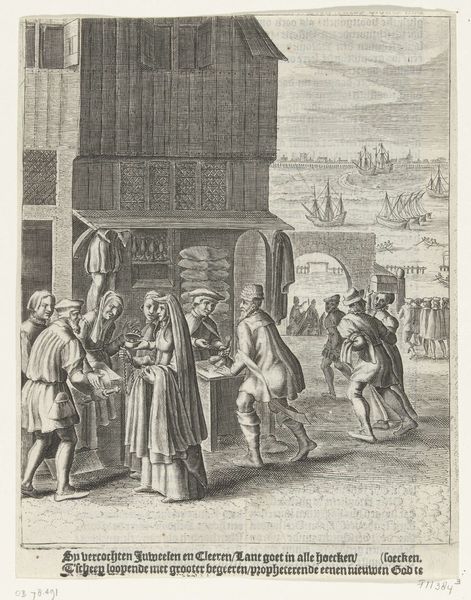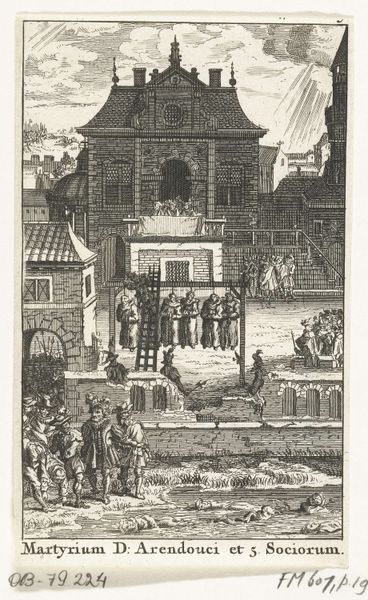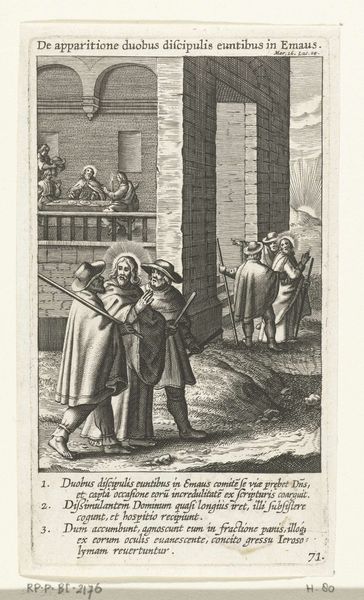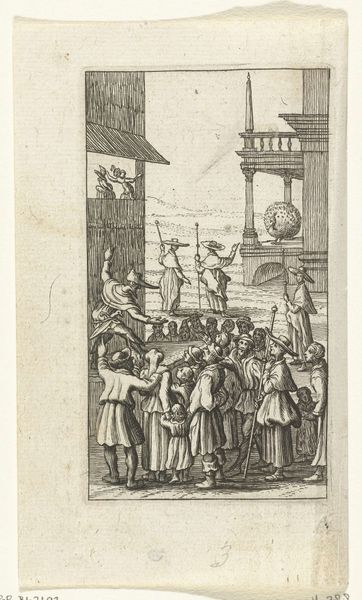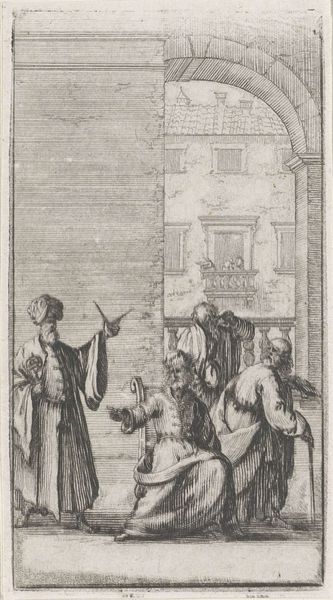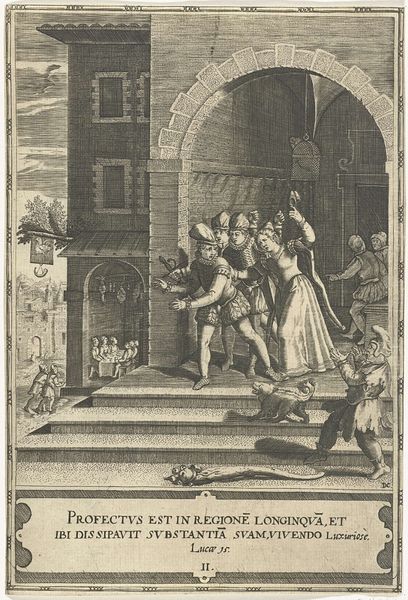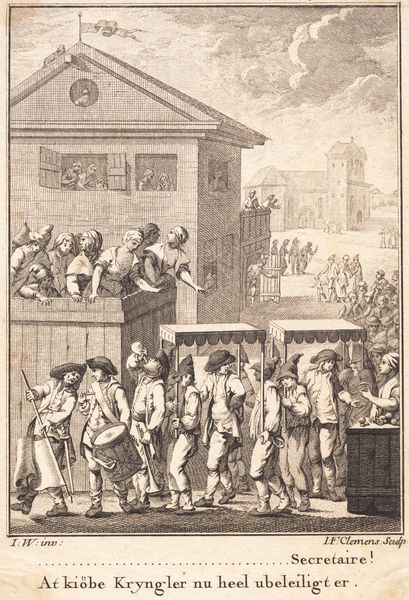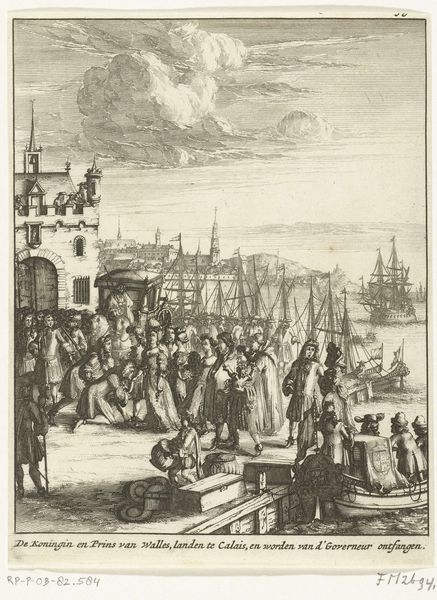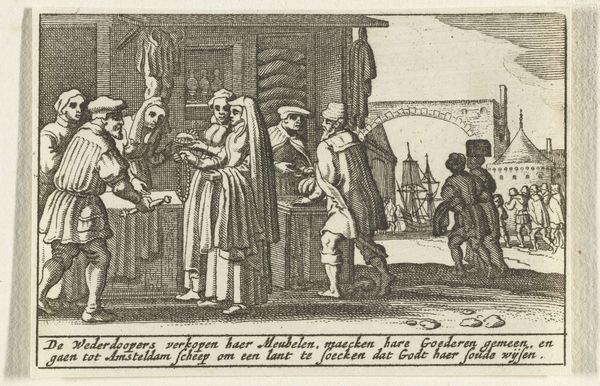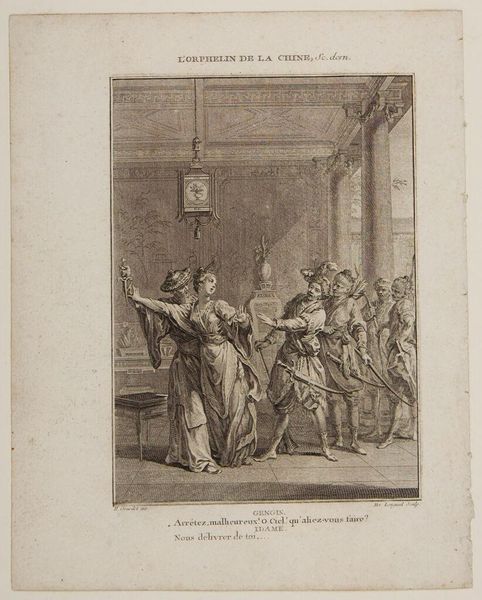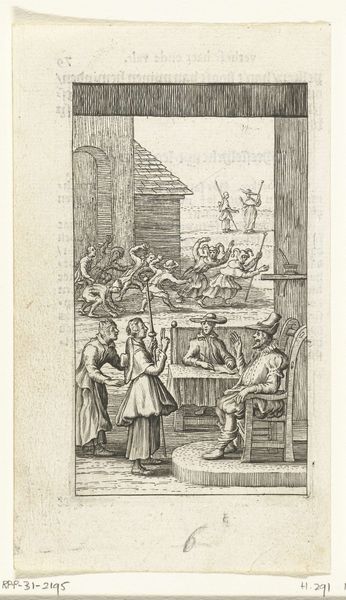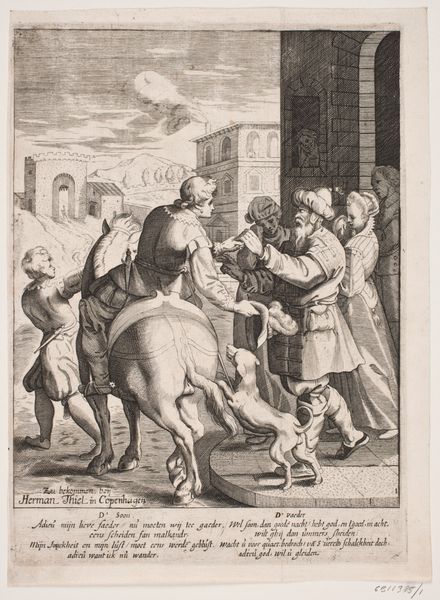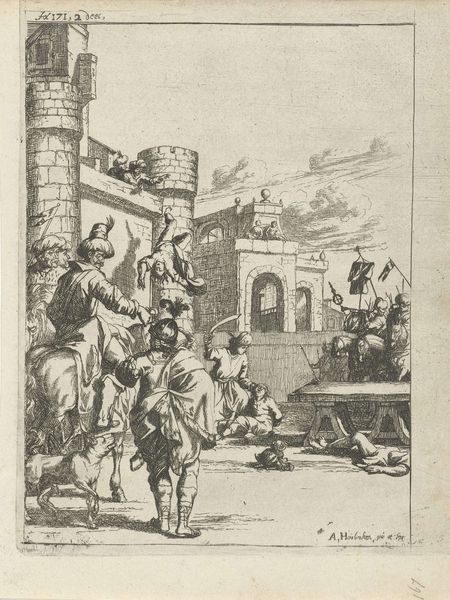
print, engraving
#
narrative-art
#
baroque
# print
#
cityscape
#
genre-painting
#
history-painting
#
engraving
Dimensions: height 108 mm, width 79 mm
Copyright: Rijks Museum: Open Domain
Editor: This is an engraving titled "Verkoop van bezit en uittocht naar Münster, 1534," dating back to the late 1650s. The anonymous artist captured quite a crowded scene. It has a sombre mood but it is full of characters. What strikes you most about this print? Curator: I'm drawn to how this print visualizes the disruption of material life. Look at the building and its connection to other material possessions of the individuals present. They seem to be negotiating these exchanges or moving them towards the ships visible beyond the arches. What goods are being sold, how does this image represent production? What does this removal suggest about the relationship between belief, land, and objecthood? Editor: I see your point. It's less about the aesthetic value and more about depicting the material exchange happening during this historical event, and the people's connection to land. Is the baroque style in any way downplaying this "laborious" aspect of artmaking? Curator: Quite the opposite. The baroque style emphasizes detail, giving us insight into the textures and forms of the material world they're engaging with. Also the choice of engraving, which is so replicable. It challenges notions of authorship and originality, hinting at mass production in its own way. Where does individual artistic genius really lie when an image becomes about its reproduction and distribution? Editor: So the act of engraving and printing makes this historical event a shared experience for people far removed from the original moment, turning individual memories into social and material artifacts. Curator: Precisely. It allows for a wider consumption of history itself, packaged and disseminated through the medium of print. It connects art to its means of distribution and it’s commodification. What do you make of this relationship now? Editor: It sounds like by depicting these events as part of its production and materiality, the work opens conversations around how historical events transformed into consumable media products, rather than only thinking about the artistry itself. Thank you. Curator: Indeed, and this awareness brings us closer to understanding the intricate ways history shapes our present and how artists communicate such intricate entanglements.
Comments
No comments
Be the first to comment and join the conversation on the ultimate creative platform.
